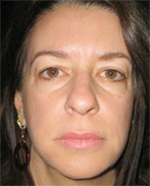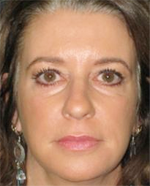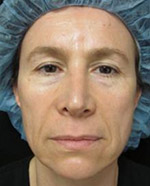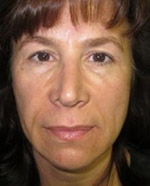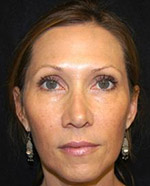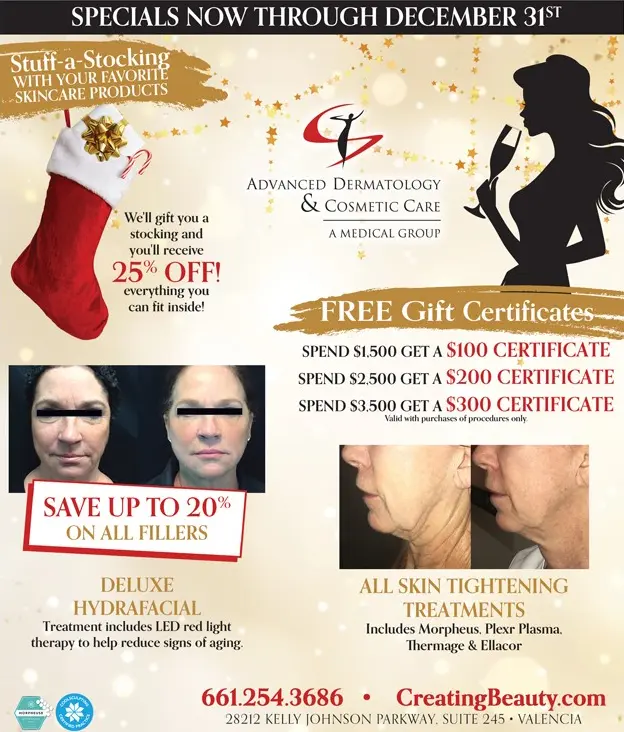Blog
Thermage Skin Tightening
Posted on March 16th, 2012There is an inherent beauty to aging that brings with it grace, wisdom and experience and who among us doesn’t want those things? There are also the wrinkles, lines and sagging skin that come with the process due to the loss of collagen. Nobody is happy about that. But what can we do?
Plastic surgery isn’t always the go-to answer for everyone, and not just because of the discomfort, cost and recovery time. Plus, we’re often not in need of such an invasive procedure, just yet. Still, we find ourselves looking in the mirror on occasion, thinking, “Isn’t there something to tighten and shape this skin, soften the wrinkles and lines and maybe, just maybe, renew my confidence?” There is, and its name, is Thermage.
Thermage is a unique procedure that employs radiofrequency (RF) technology to tighten and contour the skin. Right now, Thermage is #1 in patient demand, in part, because it is a non-invasive treatment that can be done in approximately one hour with no recovery time. Your friends and co-workers (even your family) will wonder how you found the time to “go on vacation” and ask how it is that you look so rested and rejuvenated.
The first signs of aging are usually seen in the face, neck and hands due to a loss of collagen. Thermage works to stimulate your body’s own natural stores of collagen, the very thing responsible for keeping skin youthful looking. Your skin is made up of three distinct layers; the epidermis (or outer layer); dermis (beneath the surface); and the subcutaneous tissue (the “fat layer” with its web of collagen fibers) and Thermage works to heat these layers, tightening existing collagen and helping the body to form new collagen. Unlike other methods available, Thermage renews collagen in the dermis and the subcutaneous layer. No surgery, no injections and no downtime.
Thermage has been approved by the FDA and is considered by Dermatologists to be the safest and most effective non-invasive method of tightening and contouring the skin. Thermage can be used to treat the entire face or specific parts of the body and works on all skin colors and types. Currently, more than 500,000 Thermage treatments are performed in 80 countries. Because of its reputation, you can feel confident, knowing that compared to other treatments, Thermage has the longest history of safety and effectiveness.
While other laser procedures require four or more sessions and repeat visits, patients who opt for the Thermage treatment have just one office visit. Some patients get an immediate response, but everyone gets improvement as the body responds to its own natural collagen rebuilding process during the following two to six months. Doctors and patients have also reported that the results can last years.
That magic wand we’ve all been looking for to take care of crow’s feet, tired looking eyes, that excess flap of skin that shows up on the upper eyelid and that crepe-y tissue paper appearance of the skin in that area? Thermage has the first only FDA clearance for non-invasive eyelid treatments, smoothing the skin on the eyelids, reducing under eye.
sagging and giving you brighter looking eyes that appear lifted and less tired. Your hands can receive the same treatment, resulting in the thicker, smoother skin of your younger years. In addition to the long-lasting results of smoother skin on your face, hands and neck, Thermage can also treat other parts of the body, such as the tummy, arms, thighs and buttocks.
Thanks to Thermage, you can have it all: wisdom, grace, experience AND younger, smoother looking skin. And everybody… is happy about that.
The skin you live in. [And the aesthetician that loves it.]
Posted on March 2nd, 2012When you meet someone, even if you extend your hand in greeting, their first true contact with you… is your face. No getting around it. It is the upfront billboard that announces who you are, how you feel and often what you think (yes, that blush will give you away every time). As such, it deserves a little more care and attention. After all, you do want to put your best face forward, no? Well, I’m here to tell you — a facial can be the way to do that.
Whether seeking a facial for dehydration, fine lines acne or hyperpigmentation one of the first things you want to do is find an aesthetician who will take the time to sit with you, do a detailed skin analysis and then customize the appropriate facial for your needs, which is why I was so happy to shake hands and make the acquaintance of the new aesthetician, Claudia Kinzer, of Advance Dermatology & Cosmetic Care in Valencia.
It was more than Claudia’s lifetime of work experience (which included her years as an aesthetician, spa and salon history) that convinced me she was the right person for my skin issues. It was hearing her personal story of being a teenager growing up with acne and her search for improved skin. Acne is the most common skin disorder in the United States, affecting 40 to 50 million Americans and while most associate acne with teens, it is not restricted to any age group and can affect people into their 50’s (as an adult, I’ve often said that at some point wrinkles and acne are going to fight for space on my face). Because of her deeply personal relationship with her own skin, Claudia has dedicated her life to helping clients achieve the best results for theirs. She works to customize facials, taking into account more than just skin type, but lifestyle and the level of commitment to follow-up care once a client leaves the peaceful sanctuary of her treatment room (which, by the way, has a lovely view of the mountains surrounding Santa Clarita and our brilliant blue skies).
One of my first questions about facials had to do with how much time the process would take. I’m a busy person and, like my fellow Santa Claritans, can always find time to volunteer for things around town, but don’t always have the luxury of personal time. Turns out, I could either schedule either a luxuriant 45 minutes, a decadent hour or book an entirely do-able half-hour express facial. What?! 30 minutes? I can definitely treat myself to a lunchtime facial to improve the health and overall appearance of my skin. That, is going to be time well-spent. And, when time allows I am so coming back for the relaxing, stress-relieving facial. In fact, I’m going to purchase a gift certificate for my kid’s hardworking teacher. Or that tireless coach. Or… Wait. We were talking about taking time for ourselves, weren’t we?
Then, I summoned up the courage to ask Claudia some hard-core questions about the facial peels I keep reading about in magazines and ads. The idea of a peel to refresh and renew my skin tone appeals to me, but if I opted for a peel, I wanted to know the honest truth about how much discomfort or down-time I was getting into with the flaking and peeling of it all. Claudia looked me in the eye and let me know that even peels could be customized to suit my needs and lifestyle, with simple peels that involve a minimum of 2 to 3 days, or more intense treatments that take longer.
My last line of questioning had to do with the costs of facials (because I really did want to purchase this gift of a facial for myself and someone else). I discovered that specialized packages of facials, peels and microdermabrasion were the best way to go, not just financially but also in terms of better skin results overall.
Well, yay me! Claudia Kinzer and Advance Dermatology & Cosmetic Care have made it so that I now get to put my best (soon to be softer, brighter and healthier) face forward as this year progresses and I am very happy about that.
Sincerely,
Theresa Katz
Visit Dr. Raskin’s Profile Website
Posted on January 21st, 2012To learn more about Santa Clarita Dermatologist, Dr. Bernard Raskin, please visit his profile website at www.drbernardraskin.com.
Why Everyone Should Include a Product Regimen into Their Skin Care Routine
Posted on January 13th, 2012Acne is the number-one skin disease in the world and is an equal opportunity offender. It does not discriminate against race, age or gender and unfortunately, acne is chronic too — meaning it is reoccurring and persistent.
However, as acne never gives up, neither can its possessor and in order to fight those pesky pimples, a daily skin care regimen must be followed. The repetition of a product regimen is a vital component to beautiful skin and once the right combination is discovered, acne can be controlled and skin will become clear.
We’ll give you some suggestions for finding the correct products for your skin care regimen in the next blog titled Dr. Raskin’s Must Have Products, but first let’s focus on why a skin care regimen is so key to clearing the skin.
Just like you brush your teeth twice a day, you must acquire a clear-skin habit just the same. And while you first must find the right combination of medicines and skin-care products, you must then be diligent with your skin care regimen. Repetition is an important component, nearly as essential as finding that perfect combination. Why? Because your skin does not become clear because your acne is cured, it’s clear because your skin care products are working and your skin care regimen is disciplined. Remember, acne is chronic and the only way to control is, is to continually treat it.
Additionally, a daily skin care regimen is essential because of our skin being constantly exposed to sun, pollutants and free radicals, or clogged by make-up and dirt. These exposures also lead to visible signs of aging, like wrinkles and discoloration. But if you regularly treat those signs of aging with proper skin care products as part of your regimen, they will become less visible and your skin more youthful.
So, now that we all understand why it is so vital to adhere to a daily skin care regimen, next up is figure out what that perfect skin care regimen is. Dr. Raskin and his team of skin care professionals will do just that, so call 661-254-3686 today to schedule an appointment.
Best of LA Video Shoot Photos
Posted on October 26th, 2011Here are some photos from our “Best of LA” video shoot.
New Beauty Photo Shoot
Posted on October 26th, 2011Day of Beauty Photos
Posted on October 26th, 2011Thank you to everyone that made our “Day of Beauty” a success. Here are some photos that we would like to share with you from the event.
Hyperhidrosis: Don’t sweat it!
Posted on October 12th, 2011By Bernard I Raskin, M.D.
By now everyone has heard of the cosmetic benefits of Botox® for treating wrinkles. Now there is another great use for this product. Botox® is also used for treating a condition called hyperhidrosis.
Hyperhidrosis is the over production of sweat typically on the palms, feet, or axilla (underarms). The human body produces sweat to regulate body temperature, and a certain amount of sweat is normal. People diagnosed with hyperhidrosis sweat in excess of that required to cool the body.
Botox® treatment helps control hyperhidrosis by temporarily blocking the chemical signals from the nerves that stimulate the sweat glands.
Your dermatologist can diagnose excessive sweating that is not being effectively managed with topical agents. Be prepared to tell your dermatologist about your medical history, family history, and when you first noticed your excessive underarm sweating. You may be asked to answer a self-assessment questionnaire regarding the extent to which excessive underarm sweating affects your daily activities. Once a diagnosis has been made, your dermatologist will discuss the appropriate treatment options with you.
The procedure itself takes approximately 30 minutes. The provider will ask the patient which areas bother them to determine how far beyond the hair bearing area to inject. The injections are scattered approximately every 2 square centimeters to cover the entire area of the axillae. It is also possible to perform an iodine starch test prior to injections to ascertain which areas need to be injected.
The iodine starch solution is applied to the affected area and then covered with starch. The areas that produce sweat will turn black, telling the physician which areas to inject.
You should notice a significant reduction in underarm sweating within 4 weeks of your first treatment. If you are still sweating, there is a possibility that some sweat glands may have been missed, and you may continue to experience some sweating from the untreated areas. If you do not see a significant reduction in sweating, you should contact your healthcare provider and request a follow-up consultation.
Typically patients treated with Botox® for hypohydrosis see improvement in under arm sweating for up to 6 months. It is not a cure; your symptoms will return gradually, and you will know when the time is right for another treatment. Your healthcare provider will recommend a treatment strategy to ensure that you receive the best possible results.
For more information please contact Advanced Dermatology & Cosmetic Care at 661.254.3686 or visit www.CreatingBeauty.com.
Great combinations
Posted on October 12th, 2011By Bernard I. Raskin, M.D.
Fred Astaire & Ginger Rogers, Milk & Cookies, Gin & Tonic, all great combinations. When we hear these words together their impact is much greater than individually. The same goes for treatments. Many people think that one laser “does it all”, but in reality it’s a combination that gives that “wow” result. As we all age several things happen. Our skin’s surface becomes weathered, blotchy, spotted, rough and crepe. That is what proper skincare products, peels, microdermabrasion, or if more severe, laser resurfacing can treat. As we continue to age we start to lose collagen, fat, and even bone. Our face starts to look more angular, drawn, and starts to sag. That is when we add volume with injectable fillers. Lastly the skin starts to stretch and that is where surgery or the less invasive Thermage comes into the picture. To age in the most inconspicuous way, you should start early with proper skincare, then add things in slowly as needed. Those people that look fabulous and appear to be aging really well are the ones who are probably doing a little something. Maybe a peel or IPL every couple of months. A little Botox or Dysport about 3 times a year. Then adding some subtle fillers usually starting in their late 30’s. No one would ever guess any of these things are being done, and that’s the point, Very Natural. So it’s not just one treatment that does it all, it’s the combination that gives the most natural, youthful you that you can be.
For more information please contact Advanced Dermatology & Cosmetic Care at 661.254.3686 or visit www.CreatingBeauty.com.
Can skincare products really help against aging?
Posted on October 12th, 2011Skincare companies are constantly telling us about their latest “wonder cream” or “new” ingredient, but how can you tell if they work. First, let me tell you about how products are tested. For claims about increasing moisture, often times participants are told to discontinue all skincare products for several weeks before the trial starts. This is to make sure no prior product will influence the test. But in fact, since NO previous product was used, by simply putting almost anything on will increase moisture. Companies will perform many types of tests on their products, but may choose to only highlight one or two making it seem the latest and greatest, when in fact their product may be inferior on all of the other tests. So what is a consumer to do? If you don’t want to have to go thru pages and pages of research and studies yourself, go to someone who does. Does the place where you purchase your skincare have a person specifically trained in skincare? Do they have access to the latest clinical data? How often do they attend conferences/seminars/training? (and not just from ONE skincare line)
So, can products really help against aging? Yes, the right ones can. A common question in my practice is if a specific product is good, example, “Is Lubriderm or Cetaphil a good moisturizer?” and my answer would be: as a moisturizer, yes; but as an anti ager, no. So what does that mean? It means that moisturizer alone is only a small piece of the puzzle. It will provide hydration, period. But to really fight the hands of time you need ingredients such as Retinol (helps stimulate collagen), Vitamins C&E fight free radicals by preventing new damage, an exfoliant to help aid in cell renewal (as we age this process slows and can make skin drier/wrinklier/coarser), sunscreen with Zinc, there are others and products are chosen based on a specific person’s needs. In a nutshell Retinol tells our skin to make new collagen, but we need Vitamin C to make that new collagen. New studies have shown that fat soluble C is better penetrating that water soluble, so here is an example why where you buy your skincare from makes a difference. At our office we are constantly approached from companies that want us to sell their products. We do a thorough analysis and if they pass our critical judgment, we will bring them in. So if you are one of those people that just use a moisturizer, that’s OK, but you can be doing much better and it will show on you face.
For more information contact Advanced Dermatology & Cosmetic Care at 661.254.3686 or visit www.CreatingBeauty.com































